A Family and Caregivers Guide to Home Safety for the Disabled
Are you middle-aged? If so, you might be a card-carrying member of the sandwich generation. Members of this generation care for their aging parents while also raising children of their own. Both tasks are challenging and become more so if either your parent or child has disabilities. The AARP points out that 53 million U.S. adults, or more than one in every five, provide care to a child or adult with special needs. Caregivers’ challenges include handling their own mental and physical health, making financial ends meet, coordinating care, and caring for multiple people with disabilities.
Like most people, you want a safe environment for your family members. It's a foundational desire. But when someone in the family needs help to perform basic tasks such as feeding themselves and bathing, you must deal with a host of new challenges.
Sound familiar? If so, you're in the right place. Our experts created this home safety guide for people with disabilities, their family members, and caregivers. Before we dig in, here's some advice from advocates in the field of caretaking.
From the Experts
The Safest Place to Care
for Your Adult Relative
If you’re caring for minor children with disabilities, then you probably live with them. Adults are a different matter, and your loved one may want to stay in their own home. It’s certainly hard for parents to adjust to the role reversal that occurs as they age. Here are some questions to explore when deciding whether you should move them in with you or let them stay where they are.
 Will their disability get progressively worse? If so, how fast?
Will their disability get progressively worse? If so, how fast?
Look at your relative's disability today. Is it as bad as it’s going to get, or will it progress until your relative eventually needs 24-hour care? For instance, people with Alzheimer’s tend to experience a gradual mental decline.
However, vascular dementia operates differently and affects about 20 percent to 40 percent of people with dementia. This type of dementia can develop after one major stroke or a series of smaller mini strokes. Trouble walking and other neurological symptoms pop up earlier than memory loss does. The disease progresses with steplike ups and downs. There are days when people with vascular dementia seem to be walking on solid, level ground and other days with a sharp, sudden drop in their physical and mental capabilities. The next day, they might have returned to a more stable state.
People with dementia-related disabilities can become violent with caretakers. Their ability to remember who you are can change from day to day or even from hour to hour.
 What does their doctor say?
What does their doctor say?
Have a conversation with your loved one's doctor before making permanent decisions about living arrangements. Medical professionals can give you a good idea of whether the disability will get better, worse, or remain about the same.
They can also let you know if your expectations are realistic. Many adult children want to care for their parents until the day they die. That’s a noble desire but not always realistic. A doctor should be able to tell you if your loved ones are close to the point of needing at least part-time care from an in-home nurse with extensive training. If your relative reaches a point where medical professionals think death is likely in the next few days or weeks, ask about hospice services.
If you’re an adult caring for a child with disabilities, you can’t assume that your other children will take over those responsibilities when you die. Be ready to make other arrangements if they say no. Talk to your child’s doctor about group home options rather than trying to guilt your other children into becoming unwilling caregivers.
 Does your home require fewer modifications than your relative’s?
Does your home require fewer modifications than your relative’s?
Suppose you live in a home that’s ten years old, and your dad lives in a home that’s 100 years old. It’s probably best to move him in with you because newer homes tend to be safer and more accessible. It’s not always the case, of course. For instance, your father’s older home could be one story while your home has a steep staircase to the second floor. Ask your parent’s doctor for home safety assessment referrals.
 What makes financial sense?
What makes financial sense?
Caretaking is an exhausting job without a salary. By one estimate, approximately 53 million Americans serve as unpaid caretakers for an older or ailing family member. It’s possible to get paid, but money is the exception rather than the rule. Many folks quit their jobs or reduce their hours at work, which adds to the financial stress. Because of that, it may make more sense to sell your parents’ home and put that money into an account or trust that will help you care for them. Combining expenses under one roof is usually cheaper than going back and forth between your house and your family member’s house.
Consider asking other family members to contribute financially if they’re able. Don’t go in expecting them to, but family members who are incapable or unwilling to act as the primary caretaker are often happy to contribute money to the cause.
 What has your relationship been like historically?
What has your relationship been like historically?
You should not move in a family member with a history of violent or abusive behavior toward you. Caregiving is hard enough when there’s nothing but love between the two of you; it’s downright impossible with a history of acrimony. You both have a right to feel safe.
Disabilities usually don’t change people’s personalities. They are who they were before the disability, and certain limitations may frustrate them more now. If your parent has always treated you with hostility and contempt, don’t expect a health challenge to turn Mom or Dad into an entirely different person. That’s fantasy, not reality.
 What do they want?
What do they want?
It’s essential to allow your loved ones a say. They have disabilities, but they have wants and needs. Your loved ones might even agree that it’s time for them to move into a place with constant supervision. That’s more likely with an inciting event. For instance, say your loved one fell in their garden one night and had to wait two hours for a neighbor to help.
Even with a crisis and clear evidence that their living situation isn’t viable, some seniors resist the idea of moving. Give them time to adjust to the idea, if possible. That doesn’t mean an indefinite period but something like, “What do you think about moving in with me by Christmas?” rather than, “The moving trucks arrive in the morning whether you like it or not.”
In other words, give your loved ones respect and space. You can disagree without treating them like invalids with no personal agency. Even people with severe disabilities have the right to bodily autonomy. They feel emotions such as shame and joy. Avoid scolding and embarrassing them.
Modifying Your House
to Be Accessible
Discussing a timeline with your parents allows you to make necessary upgrades to your house. Unfortunately, the AARP HomeFit Guide indicates that just about one percent of the nation’s homes offer universal design elements such as one-floor living and step-free entrances.
Home safety evaluations are one way to start getting your home up to par. Usually, an occupational or physical therapist, eldercare specialist, or another professional who works with seniors comes to your home. These folks look for unsafe elements such as low toilet heights, a lack of grab bars, and dim lighting. Ask your parents’ medical professional to put in a home assessment referral.
It’s always useful to consult guides such as AARP’s HomeFit. HomeFit includes quick fixes and a comprehensive detailing of safety issues by room. If you have the means to hire contractors, look for those with experience retrofitting houses to make them accessible. Here are some common topics that might come up.
 Universal Design
Universal Design
Depending on where you live, you may have access to home remodelers with the Universal Design Certified Professional designation from the National Association of the Remodeling Industry. The designation isn’t essential but is helpful. It lets you know the remodeler has expertise in universal design principles. Universal design aims to make as many structures as possible accessible to the widest range of people without a lot of complicated modifications.
 Bathroom Accessibility
Bathroom Accessibility
Accessing the bathroom is less likely to be an issue if you live in a single-story house. However, a two-story house with only a half-bathroom on the first floor can be a real problem. Helping your loved ones up and down the stairs every time they need to bathe is impractical and dangerous.
If you can afford it, convert that half-bathroom into a full bath with a shower and accessible tub. Install a raised toilet seat that’s easier for your loved ones to use and which helps them retain some privacy.
 Doorway Width
Doorway Width
The doorways in your home could need widening to allow quick and easy wheelchair access. Aim for a doorway width of 36 inches. Thirty-two inches sometimes works in a pinch. If you’re an inch or so short, look into swing-clear hinges.
 Steps
Steps
Just two or three small steps right outside your house can be dangerous for someone with a disability. Ramps are safer. If adding a ramp is too expensive, bring your relative in and out of a door without any steps or sudden drops. Amy Gover, the family and caregiving expert at AARP, recommends suitcase ramps to save money while enhancing flexibility. These ramps fold up to become suitcase-size and are highly portable. You can move a suitcase ramp from door to door and take it with your loved one on travels. Also, many local community organizations build wheelchair ramps for people in need. Some Medicaid programs also pay for ramps.
 Flooring
Flooring
You may like that fluffy carpet in the den, but it’s less than ideal for wheelchairs. Be alert for slippery surfaces as well. Your parent is liable to fall on slick hardwood flooring and not be able to break the fall.
 Grab Bars
Grab Bars
Grab bars are ideal for bathrooms and bedrooms where seniors lose their balance. Grab bars also allow folks to enter and exit showers and beds with minimal to no assistance. These bars must be mounted in just the right fashion, though. Avoid installing them yourself unless you’ve worked on a similar project before. Now is not the time to guess and say, “Good enough.” It’s also possible to have your grab bars double as toilet paper holders or towel hangers.
Door Knobs and Handles
Replace at least some door knobs with lever-style handles. They’re easier to grip, especially for seniors with arthritis.
 Emergency Exits
Emergency Exits
How will you get your loved one out in case of an emergency? Have a clear plan. You won’t always be able to choose which exit to use in case of a fire or other incident, so make two or three plans to adjust as needed. Run drills to ensure your goals work well in reality.
 Other Rooms
Other Rooms
How’s your kitchen looking? Are the counters and tables accessible for someone with a disability? What about the drawers? Is there room for maneuverability? Open-concept kitchens are trendy right now, and a kitchen built recently might not seem cramped. However, “not cramped” doesn’t necessarily correlate to being navigable by wheelchair or walker. Your relative needs to get through or use the room without bumping into appliances such as the stove and fridge.
 Outdoor Hazards
Outdoor Hazards
Pay attention to more than the interior of the house. Walk around the perimeter of your house several times, including at night. Bring someone to help spot areas that need more lighting or that could trip up someone with limited mobility. Pathway lighting is essential, as is entrance lighting.
Look for the obvious stuff, like loose bricks, uneven pavement, and big holes formed after the last major rainstorm. Yard tools are tripping hazards, so find storage solutions for them if necessary. Search for anthills, snakes, and other pests that can populate backyards. Poison or sprays are effective on some bugs, while other pests require an exterminator.
Equipment That Keeps
Family Members Safe
Partner with technology to keep your loved one safe, comfortable, and as independent as possible. Here are a few ideas to consider investing in.
 Security Cameras
Security Cameras
Placing security cameras around your home helps you keep an eye on your family members when you can’t be in close physical proximity to them. Two of the biggest advantages are mobile alerts and live viewing.
Live viewing is ideal when you must leave your loved one with another caretaker. If you’re working or running an errand, you obviously won’t have time to watch around the clock, but you can use your smartphone to pull up a live camera view of every room that has cameras. Those occasional check-ins are reassuring.
Mobile alerts are another essential tool in your caretaker’s arsenal. When someone opens a door and enters your home, you get an immediate text alert on your phone. You’ll also be able to pull up a video of the person coming inside the house. If a doctor visits your relative while you’re out, you’ll know. Similarly, you’ll also know if someone who isn’t supposed to be there comes in.
 Medical Alert Systems
Medical Alert Systems
A medical alert system allows your relative to retain some independence without sacrificing safety. Users wear a pendant or wristband with a help button. If they fall or need assistance, they press the button to connect with a monitoring center staffed 24/7. Most buttons are water-resistant in case of a fall in the shower or bath.
What if your family member is unable to press the help button? That’s where automatic fall detection can be a literal lifesaver. Medical alert systems with this optional feature automatically connect to a monitoring center when a fall is detected.
Premium medical alert packages offer motion sensors that let you track a relative’s movements. If their activity level drops below a certain threshold, you’ll get an alert.
Some packages offer GPS tracking for extra peace of mind. If your relative leaves home while wearing a tracking device, the GPS should be able to locate them and send help.
 Smart Locks
Smart Locks
Managing door locks is a balancing act when you’re caring for a child or adult with disabilities. You don’t want them to open the door too easily and wander off, but you don’t want to lock them inside a room with no way out in case of an emergency.
Smart locks that you can control remotely offer your best chance at a happy medium. When you’re at home with your family member, you can keep the interior doors unlocked so they don’t feel confined to one room. If it’s nighttime and they’re sleeping, consider locking their bedroom door so they can’t wake up in the middle of the night and leave the house.
As circumstances change, you’ll be able to adjust the lock settings on your smartphone app in a matter of seconds.
 Fire Alarms
Fire Alarms
Connect your home’s fire alarms to your larger security system. Why is that useful? Let’s say you need to leave the house for 20 minutes to drop something off at the post office. That means leaving your family member alone for a short time.
Right after you exit the post office, you get a call from the security company. A fire alarm has gone off at your home. Do you want the fire department to respond? At the same time, you can pull up a live view of your home. You’ll be able to tell the dispatcher whether to send help and mention the family member who needs assistance.
The cameras may not show anything out of the ordinary. False alarms do occur with some frequency. But if a fire alarm is activated, you’ll get some comfort from being able to 1) dispatch emergency responders immediately and 2) pull up a live view of your home to see what’s happening.
Speaking of fires, they’re one of several threats to loved ones who have disabilities.
Threats to
Family Members Who Have Disabilities
 Fires
Fires
Home fires can occur at any time. The folks most at risk are older adults, people with disabilities, and children. According to FEMA, senior citizens 65 and older, particularly those 85 and older, face the most risk of death. People 85 or older are 3.6 times more likely to die in a fire than the general population.
Children are less vulnerable to dying in a fire compared with the general population. However, children with disabilities face obvious disadvantages. If you’re caring for either a child or adult with a disability that makes escaping from a fire harder, you may need a specialized fire alarm. The U.S. Fire Administration reports that annually, there are 700 fires in houses where people have physical disabilities and 1,700 fires in homes with people who have mental disabilities. Not surprisingly, fires are more likely to start in or around the kitchen.
If the person is hard of hearing, look for fire alarms or listening devices with flashing/strobe lights and bed shakers. Many listening devices also emit sounds at an accessible mixed-pitch frequency. Connect your fire alarms so they all sound when one is triggered. This linkage gives everyone more time to evacuate. (Listening devices aren’t alarms themselves, but they “listen” for traditional detectors to go off and respond with their own sounds, lights, and shaking.)
Explore smart home security systems or solutions such as Google Nest, if you haven’t already. You can customize monitoring, notification, and evacuation to best fit your and your loved one’s needs.
If you’re searching for a new place to live, prioritize homes with fire sprinkler systems. Similarly, if you’re building a house, incorporate a sprinkler system. Retrofitting is pricier, but the USFA is researching ways to lower the cost.
Sleeping on the ground floor is safer for your loved ones with a disability. They can escape quicker and don’t have to risk tumbling down the stairs. If your loved one is on oxygen, a small fire can quickly become much bigger. Plan several ways for caregivers or loved ones to shut off the oxygen within seconds.
Carbon monoxide is a serious threat, too. Fortunately, combination fire/carbon monoxide detectors are practical and easy to find.
 Natural Disasters
Natural Disasters
Do you live in Tornado Alley? What about by the coast? Some parts of the country are less likely to be hit by certain natural disasters than others, but you need a natural disaster plan no matter where you live.
As a practical matter, that could mean having a manually operable backup wheelchair if a power outage renders the electric wheelchair nonfunctional. Talk with your relative’s medical team about these types of backup options in emergencies. Every home should have a disaster supply kit with a few days’ supply of medication and other essentials.
 Certain Foods
Certain Foods
Some foods are dangerous for people who have trouble with things like chewing or swallowing. A diet full of soft foods can lower the risks but talk to your loved one’s doctor to ensure a balanced, nutritious diet.
 Other People
Other People
Make sure the people who come into your home meet a baseline of trustworthiness. That’s important anyway, but it’s even more critical when you’re a caretaker for a person with a disability. Don’t let in someone without proof they are who they say they are. That means identification at a minimum; never trust someone who says, “The electric company sent me over,” but offers zero proof. The AARP says scammers love to imitate your utility company. It’s a lot harder to keep an eye on someone once they cross the threshold and have access to your home and the people inside it.
If you need to call the company while the supposed service worker waits outside, don’t feel bad. You’re performing your due diligence.
Caregivers and family members are potential dangers, too. For instance, people with developmental disabilities are four to ten times more vulnerable to abuse and four times more likely to be crime victims. Children are at even higher risk. You may never dream of hurting your family member, but caretaker burnout is a genuine thing that can lead you to act in uncharacteristic ways. It can happen to anyone. See our list of resources at the end of this guide for more on caretaker burnout.
 Themselves
Themselves
Not every person with a disability such as dementia or autism spectrum disorder wanders off, but some do. This type of disappearance is sometimes called elopement, and it has nothing to do with a secret marriage.
Small children often leave a caretaker’s sight temporarily if, for instance, they see a dog and run across the street to pet it. That’s scary but not the same thing as elopement. The CDC lists several reasons why children with disabilities might wander off.
To check out something new or intriguing
To run or explore
To escape stressors such as arguments or demanding tasks
To hang out in a place they like
With time, it can become easier to predict what might trigger a child to run away. For instance, let’s say it’s the beginning of winter and you turn on a gas heater for the first time. Everything works fine, but dust burns off and activates the fire alarm. In turn, your son runs out the unlocked front door before you can stop him. Now you know the alarm is a trigger for elopement.
Similar things trigger adults, but they can go out looking for people or places from their past. It’s common for someone with dementia to get up in the morning and think they must head to a teaching job they left 20 years ago. They might have a specific route in mind, only to get lost and disoriented after a few minutes outside.
Whether your family members are eight or 80, take preventative measures against wandering. Get them ID bracelets or necklaces with their address and your contact information. Secure the jewelry in a comfortable but hard way for them to remove on their own. Install security cameras in every part of the house they can access, plus one or two cameras trained on outdoor areas. If they do escape, look at the footage to see the direction they went in.
If you get along with the neighbors, mention your family member who might wander. You don’t have to go into detail or answer personal questions, but it’s nice to have more people on your side and ready to help if you need it.
What to Do After a
Relative with a Disability Goes Missing
Caretaking for relatives with disabilities is scary. Depending on how mobile they are, they could disappear in only a few seconds. It’s natural to feel guilty, but you can’t focus on that sense of blame. It’s time to spring into action.
Once you know they aren’t in the house or near the premises, call 911. Law enforcement agencies have access to resources that you don’t, making it more likely your relative gets home safely. There’s nothing wrong with also creating your own search party consisting of friends and relatives.
 Silver Alerts
Silver Alerts
If a child gets abducted, you might receive an Amber Alert on your phone and TV. If a vulnerable older adult can’t be found, state agencies issue a Silver Alert to broadcast critical information and urge people to call authorities if they spot the missing person.
In some states, Silver Alerts are known as Senior Alerts, Golden Alerts, or other names. The following states have Silver Alerts or similar programs to specifically help locate missing older adults:
- Alaska
- Arizona
- Arkansas
- California
- Connecticut
- Florida
- Illinois
- Indiana
- Kansas
- Louisiana
- Maine
- Maryland
- Massachusetts
- Mississippi
- Nevada
- New Jersey
- New Mexico
- North Carolina
- Oklahoma
- Oregon
- Rhode Island
- South Carolina
- Tennessee
- Texas
- Washington
- West Virginia
- Wisconsin
- Alabama
- Colorado
- Georgia
- Kentucky
- Michigan
- New Hampshire
- New York
- Ohio
- Virginia
 The Criteria for Silver Alerts
The Criteria for Silver Alerts
California issues a Silver Alert only if several conditions are met. One is this: “The missing person is 65 years of age or older, developmentally disabled or cognitively impaired.” There’s also this: “The law enforcement agency determines that the person has gone missing under unexplained or suspicious circumstances.”
Elopement is a real concern if someone has Alzheimer’s, vascular dementia, or a similar ailment, as six in 10 people with dementia wander, according to the Alzheimer’s Association. Such diseases can give people the urge to go outside and look for something, even if they’re unsure what that thing is.
Groups such as Project Lifesaver aim to keep vulnerable populations safe when they wander. It’s an especially big challenge because dementia often comes with a distrust of government officials and others who seem out to cause harm.
 Silver Alerts for Children
Silver Alerts for Children
Some states issue Silver Alerts for children. That may sound confusing, but there’s a certain logic to it. When Silver Alerts are issued for children, that means they’re missing, but authorities do not think they were abducted.
If a child with a disability wanders away from home but there’s no sign of foul play, authorities might issue a Silver Alert. If the child walks off the premises and a neighbor reports seeing someone in a windowless van grab them and drive away, that’s cause for an Amber Alert.
Carrying or Lifting
People with Disabilities
Times may call for you to carry or lift your family member. Lifting is more common, especially when you’re transferring loved ones from, for example, the toilet to the wheelchair or from the wheelchair to the bed.
Assisting children is often easier, at least until they become 6-foot-tall teenagers who outweigh you. If you don’t know how to properly lift someone’s body weight, you’re risking injury to yourself and loved ones. Analyze the situation carefully for solutions. Transfer boards between the bed and wheelchair could be one approach. Another could be getting a second person to assist with the lifting. Here are some more tips.
Talk to the family member and tell them what you’re doing. Even if they don’t understand every word, talk in a gentle tone that conveys you want to help.
Make them part of the process by saying things like, “I’m going to do X, and then I need you to do Y. Is that OK?” Simple instructions they can follow will help them feel less like a burden.
Use the strength in your legs rather than your back.
Bring in a professional when in doubt. Home health aides and nurses should have specific training on how and when to lift patients manually.
Love Matters Most
Many caregivers are honored to care for their loved ones. The feeling is especially profound if it’s an adult child caring for a parent. But while physical safety for everyone is a caretaker’s number one priority, emotional safety must follow right behind it.
Do what you can to make your relative feel comfortable and appreciated, even needed, regardless of their cognitive abilities. All the accessible entrances and wheelchair ramps in the world won’t make a difference if you frequently sigh and act as if you’d rather be anywhere else. We all deserve to feel wanted. At the same time, don’t be too hard on yourself. The job is brutal, and caregiving requires your best effort. That means emotional, mental, and physical breaks. Avoid jumping into caregiving without a plan. Incorporate other relatives, friends, and paid professionals so you get some “me” time.
Additional Resources
Caregiver Burnout: The Cleveland Clinic describes the symptoms of caregiver burnout and offers prevention tips.
Lifting Techniques for Home Caregivers: The American Academy of Orthopaedic Surgeons has an overview of various lifting techniques.
What to Do When Elderly Parent Refuses Assisted Living and Caregiving Services: Patience, teamwork, and a shift in perspective are often necessary as parents age and develop disabilities.
Understand Wandering and How to Address It: The Mayo Clinic details the causes of wandering and shares solutions for prevention and safe return.
Fire Safety Outreach Materials for People with Disabilities: These materials from the U.S. Fire Administration include suggestions for communication and exit during a fire.
Disaster Preparedness: Ready.gov is on top of safety during natural disasters for folks who have hearing, sight, mobility, speech, and sensory disabilities, among others.


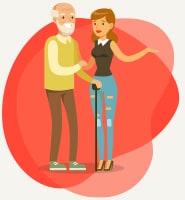 Will their disability get progressively worse? If so, how fast?
Will their disability get progressively worse? If so, how fast? What does their doctor say?
What does their doctor say? Does your home require fewer modifications than your relative’s?
Does your home require fewer modifications than your relative’s? What makes financial sense?
What makes financial sense?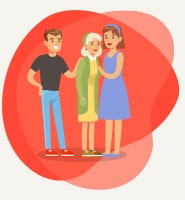 What has your relationship been like historically?
What has your relationship been like historically?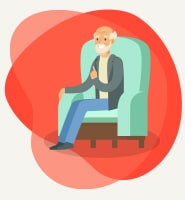 What do they want?
What do they want? Universal Design
Universal Design Bathroom Accessibility
Bathroom Accessibility Doorway Width
Doorway Width Steps
Steps Flooring
Flooring Grab Bars
Grab Bars Emergency Exits
Emergency Exits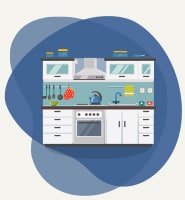 Other Rooms
Other Rooms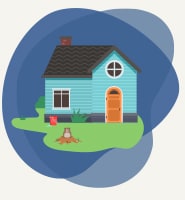 Outdoor Hazards
Outdoor Hazards Security Cameras
Security Cameras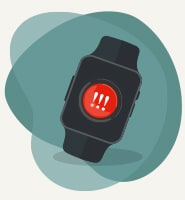 Medical Alert Systems
Medical Alert Systems Smart Locks
Smart Locks Fire Alarms
Fire Alarms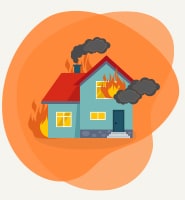 Fires
Fires Natural Disasters
Natural Disasters Certain Foods
Certain Foods Other People
Other People Themselves
Themselves To check out something new or intriguing
To check out something new or intriguing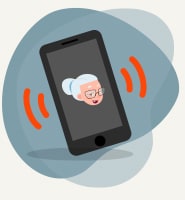 Silver Alerts
Silver Alerts The Criteria for Silver Alerts
The Criteria for Silver Alerts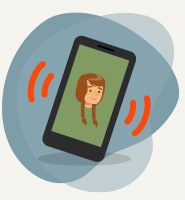 Silver Alerts for Children
Silver Alerts for Children Talk to the family member and tell them what you’re doing. Even if they don’t understand every word, talk in a gentle tone that conveys you want to help.
Talk to the family member and tell them what you’re doing. Even if they don’t understand every word, talk in a gentle tone that conveys you want to help.